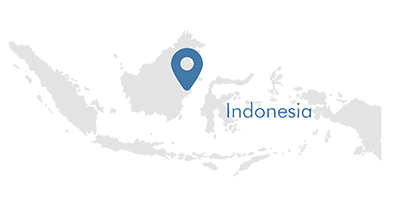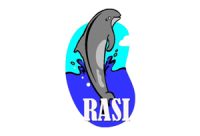BORNEO, INDONESIA, ASIA
Mahakam Lakes & Wetlands
Situated on the world’s second largest island, Kalimantan, formerly known as Borneo, inherits the unique Mahakam wetland complex. The Mahakam Area is part of East Kalimantan, where wilderness and jungle prevail. The Middle Mahakam Area (MMA) comprises the lakes Danau Jempang, Danau Melingtang and Danau Semayang and is located in a geological depression covering an area of about 4.000 km². The size and depth of the lakes vary significantly depending on seasonal changes. The annual fluctuation can reach more than six meters. The MMA is situated between 180 km and 375 km from the mouth of Mahakam river and includes three major and several minor lakes, peat and freshwater swamps and major tributaries. It is one of Kalimantan's largest wetland areas. These lakes and swamps are very important fish-spawning grounds and replenish the main river seasonally.
What makes it special
Over 30 lakes in the middle Mahakam area, with the three main lakes Jempang, 15.000 ha; Semayang 13.000 ha; and Melintang 11.000 ha form the largest wetland in Borneo.
Protection status
· Nature Reserve, no IUCN Cat.

Biodiversity
The area has a high biodiversity potential in terms of breeding and migratory bird species and hosts the symbol species of East Kalimantan, the critically endangered Irrawaddy Dolphin, who lives in fresh, brackish and salt water. Other species inhabiting the area are endangered mammals such as Proboscis Monkeys, wild Banteng and Crocodiles.

Local Communities
Fishing is the primary source of livelihood in the Mahakam lakes area; most of the people around the lakes are fisher. The middle Mahakam lake area is an area of intensive fishing activity with a productivity of 25.000 to 35.000 metric tons per year since 1970.
Threats
The area faces several serious threats, including species extinction and habitat loss due to land conversion, unpredictable hydrological changes from various human activities, pollution from pesticides and mercury, forest fires and illegal logging leading to habitat loss, over-fishing with harmful techniques, noise and fuel pollution from boat traffic affecting breeding bird populations and Irrawaddy Dolphins, hunting of protected species, and direct mortality of Irrawaddy Dolphins due to gillnets. Additionally, increased sedimentation in the lakes poses a risk to dolphin migration paths, coinciding with narrow, dredged pathways for high-speed boat traffic.
The Living Lakes Network awarded the Mahakam Lakes and Wetlands as Threatened Lake of the Year in 2008.
Rare Aquatic Species of Indonesia



